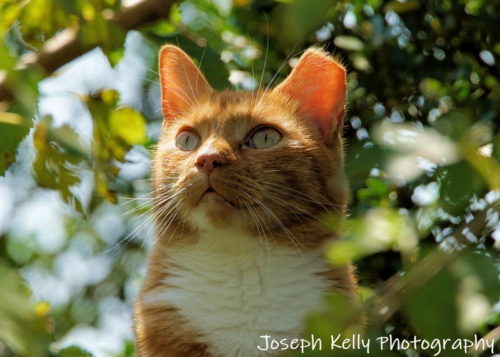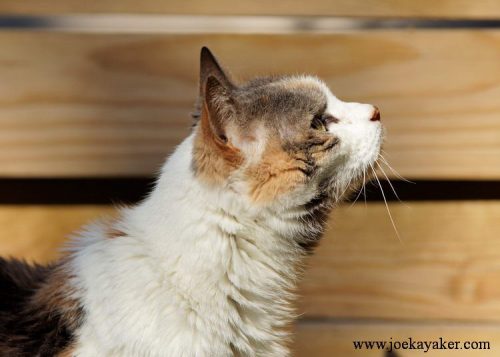Friday, May 1, 2020,
This is one beautiful cat. I didn’t look under any tails so I don’t know it’s gender, but it sure is good-looking. This is not my cat. Every cat I’ve had in the past thirty plus years has been home bound. This cat is in fact and in deed a major threat to wildlife. He hangs about the Marine Nature Study Area in Oceanside, New York. While I have not observed him at work, many of my fellow photographers have seen him with prey, usually birds but at least once with a Muskrat. When I took these photos he was not staring wistfully into the distance. On the contrary, he was vigilantly busy watching birds. And not in a good way. Cats are cats, and cats are predators. Very, very good predators.
Don’t get me wrong. I love cats. I really do. I go to sleep each night with one sleeping on my chest. But, as I stated above, cats are predators, first and foremost. I can’t tell you that they cannot help themselves because it would never even occur to a cat to help itself by not attempting to catch and kill anything that it can, well, catch and kill. It is the very nature of cats to catch and kill. I don’t blame cats for being cats, but I do have a problem with the folks that allow their cats to roam outdoors claiming that their “Fluffy wouldn’t hurt a fly.” I’ve got news for you people. Fluffy would indeed hurt a fly. And Fluffy will not stop there. Fluffy and her brethren are responsible for the deaths of as many as 3.7 billion birds in the United States alone. The death toll does not stop there. Cats are also suspected to kill as many 20 billion small mammals each year. Again that’s billions. Let that soak in for a moment.
Now, let’s turn our attention to the left ear of this very handsome cat. Again, I really am unaware of it’s gender so it may very well be a female cat. Do you see how that ear has been apparently lopped off? At first, I thought this was a sign of an accident or maybe even frostbite. Upon further inquiry, I found out that this is a sign of a Trap, Neuter, and Release (TNR) program. Sometimes they notch a cat’s ear and sometimes they just clip the corner. Both methods seem a bit cruel to me, but so does capturing and releasing a proven dangerous animal to the wild. The idea behind TNR seems to be that there will fewer wild cats if the trapped cats have been neutered. This, in itself, would appear to be a good idea. However, releasing said cats back into the wild, does nothing to deter them from killing more birds and small mammals. Even Fluffy, who gets three square meals at home, likes to catch her own prey. She doesn’t need to be hungry to kill. She just needs to follow her nature. And it’s in a cat’s nature to kill. JK.









